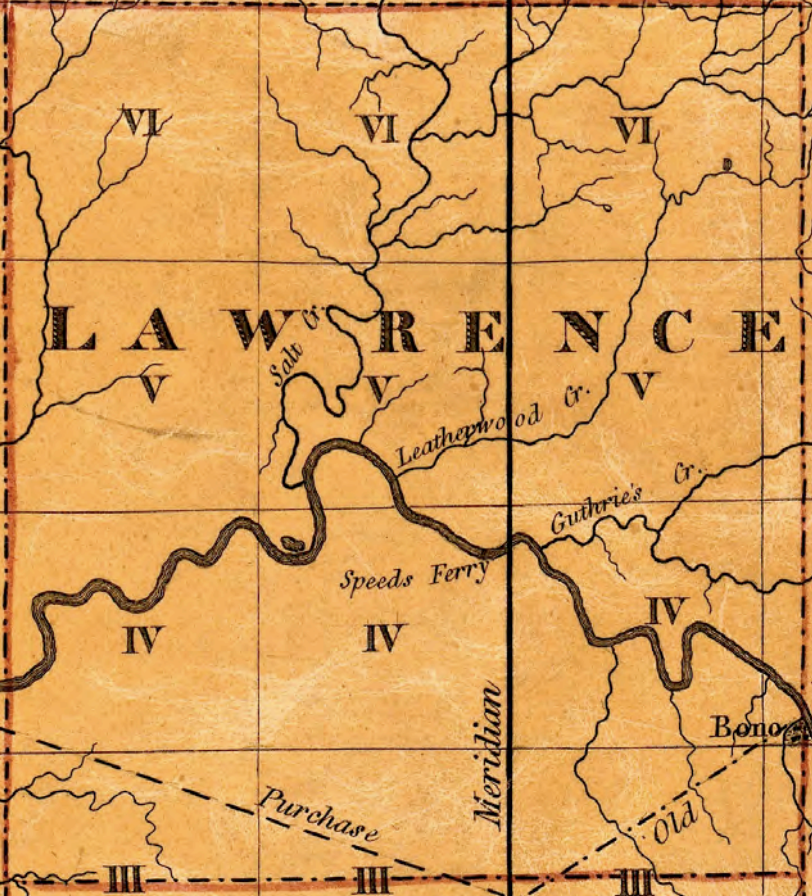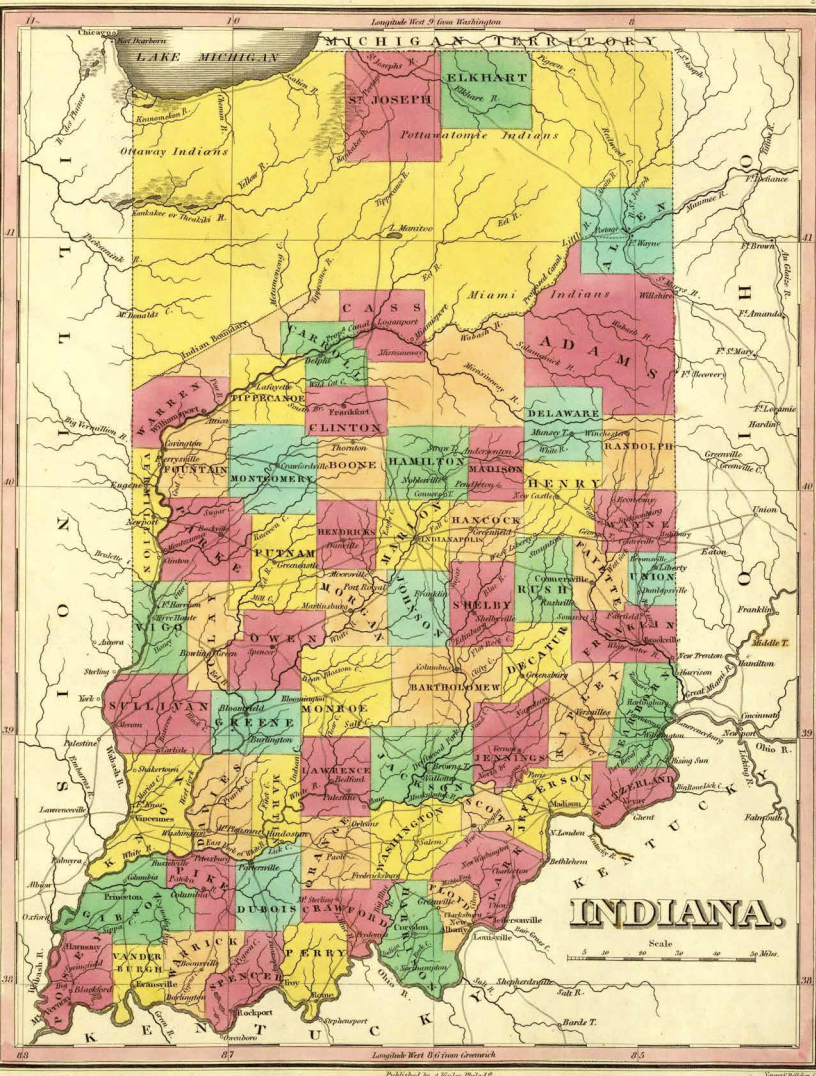'Rivers, Roads and Rails': Spring Mill State Park once a crucial crossroads for commerce

MITCHELL — Most of Lawrence County knows about the small industrial village that functioned at what is now Spring Mill State Park, influenced by historical figures like Amzi Munson, George Sheeks, Hugh Hamer and many more. They are familiar with the grist mill that was used to grind grain and the multiple small family businesses that operated there. They may also know about the whiskey that was produced using excess corn, which was then sold as far as New Orleans.
Not as many people know that Spring Mill also served as a crucial intersection for commerce and transportation.
More: Make the most of summer with these five things to do in Lawrence County this weekend.
Retired Indiana University professor David Nord has researched Spring Mill's transportation history extensively, devoting large amounts of time to understanding the economic, social and infrastructure dynamics of that time.
'Rivers, Roads and Rails'
Visitors will have the opportunity to learn more about the unique history of Spring Mill Village, which functioned as an important economic and transportation hub from the 1820s to the 1860s, by attending a presentation next weekend that will be led by Nord.
The discussion will take place at the Village Tavern on Saturday, June 25 at 2 p.m. The discussion will feature historical maps and photos of Lawrence County. The presentation is titled "Rivers, Roads and Rails: Mapping the Transportation History of Spring Mill."
Nord will delve into the history to understand why the village was so important not only to Lawrence County but to the entire region of southern Indiana.
Nord is hopeful the presentation can help inspire others to develop an interest in learning local history.
Others are reading: Mitchell schools to implement new safety policies beginning next school year.
"There are things about the way in which southern Indiana exists today that have deep roots," Nord said. "So, I think local history is important for understanding how towns and cities have developed, and some have developed differently than others. History helps you understand that partly by knowing origins but partly by following how things developed over time."
Nord said the White River's proximity, combined with multiple state and county roads snaking throughout the village, earmarked Spring Mill as an important location for trade and transportation. Two mainline railroads were also built nearby.
"Spring Mill really was a crossroads and that road stagecoach trail that goes down into the village from the south really was an important road in the early 19th century," Nord said. "It really did go up the bluff on the north side, and cross the railroad track and went on to Bedford, Bloomington, Martinsville and Indianapolis. This was a state-authorized road in 1821."

Nord sifted through traveler's guides and stagecoach itineraries where he learned about the stagecoach route that traveled north and south near Spring Mill.
"If you look at old maps of both the area and then the earliest maps of the park from the early 1930s, you can see that the parks simply used all the roads that were already there," he said. "Most of the roads in the park are repurposed old roads, but they tended to stub them off so that the park was more isolated."
While Spring Mill is secluded by the thick forest surrounding it, Nord says this is not what the area would have looked like back when it was in its prime.
Dramatic changes were applied to the landscape in the late 1930s. Spring Mill Inn was constructed on a cliff to the east of Donaldson Cave, the lake was created, Mill Creek valley served as the location for a new road and a new parking area was created. The old west-side entrance was closed, and a small sliver of land from the main village road was turned into what is now known as the Stagecoach Trail.
Rolling blackouts? Indiana electric companies ask customers to reduce energy consumption.
Nord is not the only member of his family that is passionate about Spring Mill State Park. His wife, Martha, also volunteers at Spring Mill where she sews and quilts. Nord's Son, Paul, is a woodworker who previously worked as a historic woodworker at Spring Mill Pioneer Village.
This piqued Nord's interest as he considered the role transportation had on the industrial village. He eventually found himself visiting the area more often where he would speak with park volunteers like Program Coordinator Coletta Prewitt and Property Manager Mark Young.
A time of great change
Nord explained how the War of 1812, a conflict fought between the United States and Great Britain, resulted in large numbers of settlers pouring into Lawrence County.
"After the end of the War of 1812, a lot of people moved into that part of Indiana for a couple of reasons. One is that the land was acquired through treaties from the Indians. It was wrested from the Indians through treaties and payments but they had little choice. Most of Lawrence County county came as part of what was known as the Harrison Purchase that William Henry Harrison negotiated in the Treaty of Fort Wayne in 1809," Nord said. "And then comes the War of 1812. Immediately after the ending of that, the beginning of 1814 and 1815, that area in Lawrence County was surveyed. So that is when lots of settlers began to come in and they came up from the Ohio River."
People preferred to travel by water during this time as roads throughout the state were poorly maintained. Steamboats would transport goods, settlers, farmers and traders to ports along the Ohio River such as Rockport and Louisville. They would then take a stagecoach up to Bedford, areas around Spring Mill and other local destinations.
"Most roads were improved, if they were improved at all, by local people who were required by the county to give a certain number of days a year to work on roads. Road travel really was pretty bad," Nord said.
More: Limestone Heritage Festival returns to Bedford June 24, 25.
Railroads began appearing in the areas around Spring Mill in the 1850s, with the north-south New Albany & Salem Railroad (later called the Monon) being established to the west of the area in 1853. The Baltimore and Ohio Railroad set up routes going east and west, which ran to the north of Spring Mill. These two tracks crossed paths in Mitchell.
"Railroads first began to be proposed for this part of the country in the 1840s. Everybody thought that railroads were going to be the answer to their dreams of being connected to the outside world. In effect, railroads did totally change the economy of Indiana and railroads were developed extensively in the 1850s," Nord said.
Railroads provided farmers with a reliable form of transportation to move their goods with ease, reducing high transportation costs.
The railroads that were set up in the county ran very close to the working village at Spring Mill. According to Nord, this actually ended up bringing more harm than good.
"Farmers loved railroads because it raised the value of their crops and reduced transportation costs, so they could sell corn and wheat to greater distances and distant markets. But one of the things that is sometimes overlooked is that the coming of railroads really reduced the value of water power by reducing the price of coal" Nord said. "This allowed steam-powered industries to compete with water-powered industries because they could get coal. That makes a big difference. Flour milling continued in Lawrence County, including Mitchell, long after it had atrophied in Spring Mill just because it was more convenient, cheaper and a better thing to have your mill right along the railroad where coal could be delivered. There was no point in having a little water-powered cave spring mill anymore to do flour milling.
Nord's background
Nord's research background centers on the history of journalism and religious publishing. He spent 32 years teaching at Indiana University's School of Journalism before retiring in 2011. During his time in Bloomington, Nord also served as an adjunct professor of history. Nord was given the title of professor emeritus of journalism and adjunct professor emeritus of history upon his retirement.
Retirement has allowed Nord to spend more time studying southern Indiana's economic and transportation history, including here in Lawrence County.
Local news: Safe Haven Baby Box installed at Mitchell Volunteer Fire Department.
Nord serves as a volunteer historian for Spring Mill State Park, delivering presentations about the area's history as an important transportation hub.
His research has largely focused on the use of rivers, roads and railroads as forms of transportation in the years preceding the civil war. Nord has also published an annotated bibliography called "Mapping Lawrence County, Indiana" which covers the period between 1818 and 1941.
This article originally appeared on The Times-Mail: Spring Mill State Park once a crucial crossroads for commerce

